The exhibition features two new bodies of work created through the gravure printmaking process and produced over the course of the COVID-19 lockdown. In spite of the challenges of isolation and geographical limitations of the pandemic, Kentridge and his collaborators were able to work together using the gravure and photogravure printmaking processes to create these seminal new pieces.
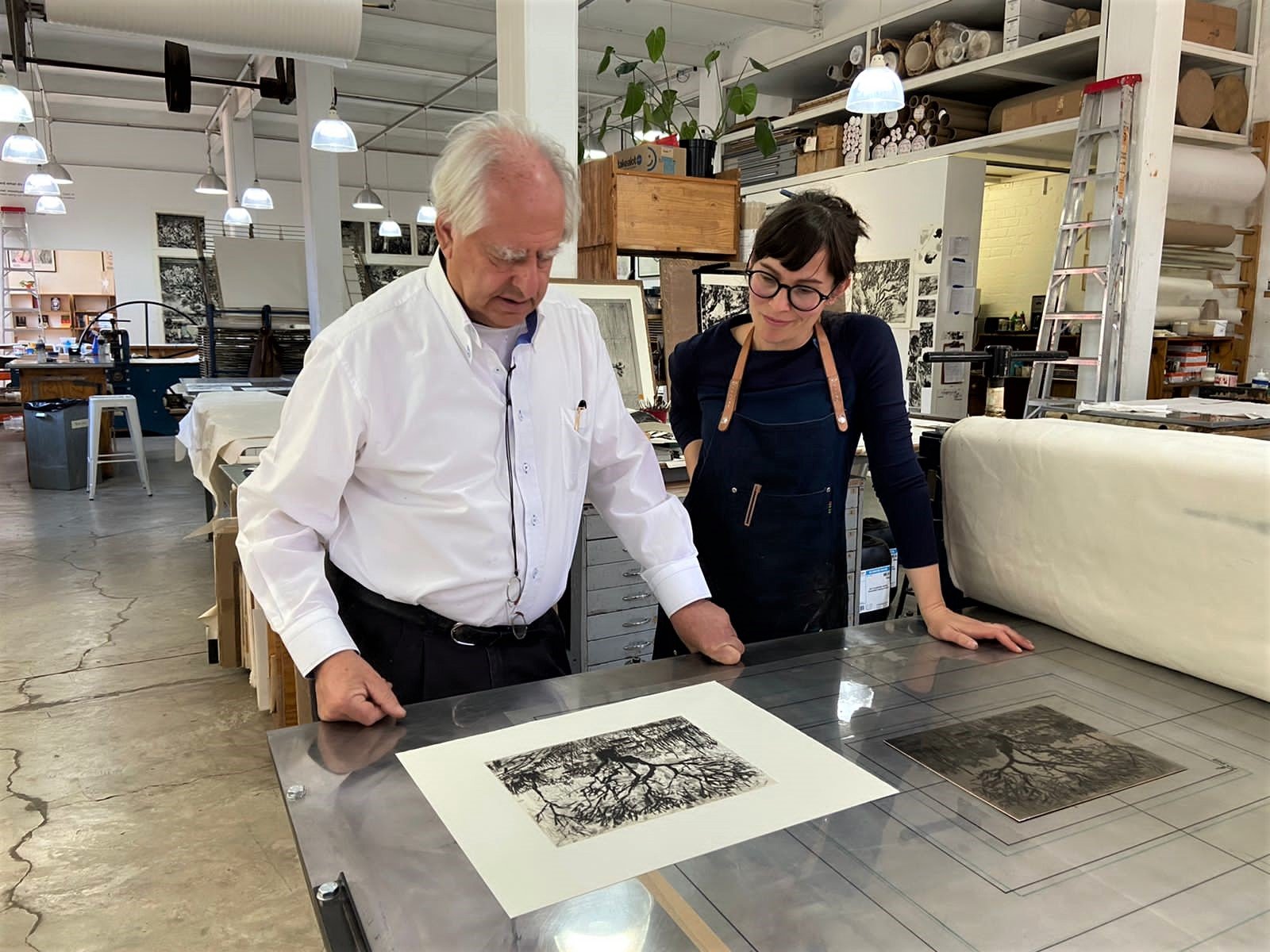
The first body of work, titled Studio Life, is a series of 12 photogravures that shows the artist in various phases of work in his Joburg studio. The images are replications of stills from the introspective film series Kentridge created during the first years of the pandemic, Self-Portrait as a Coffee Pot, which recently had its world premiere at the Toronto International Film Festival. The film series is a rumination on the concept of art itself, the artist's practice and the creative process, using the setting of "the studio" as a lens through which to explore the question, what is the real work, the experience of the object or the object itself? Kentridge worked with his long-time collaborators at the David Krut Projects and Master Printer Jillian Ross to turn stills from the films into a series of large-format prints through the manual intaglio printing process.
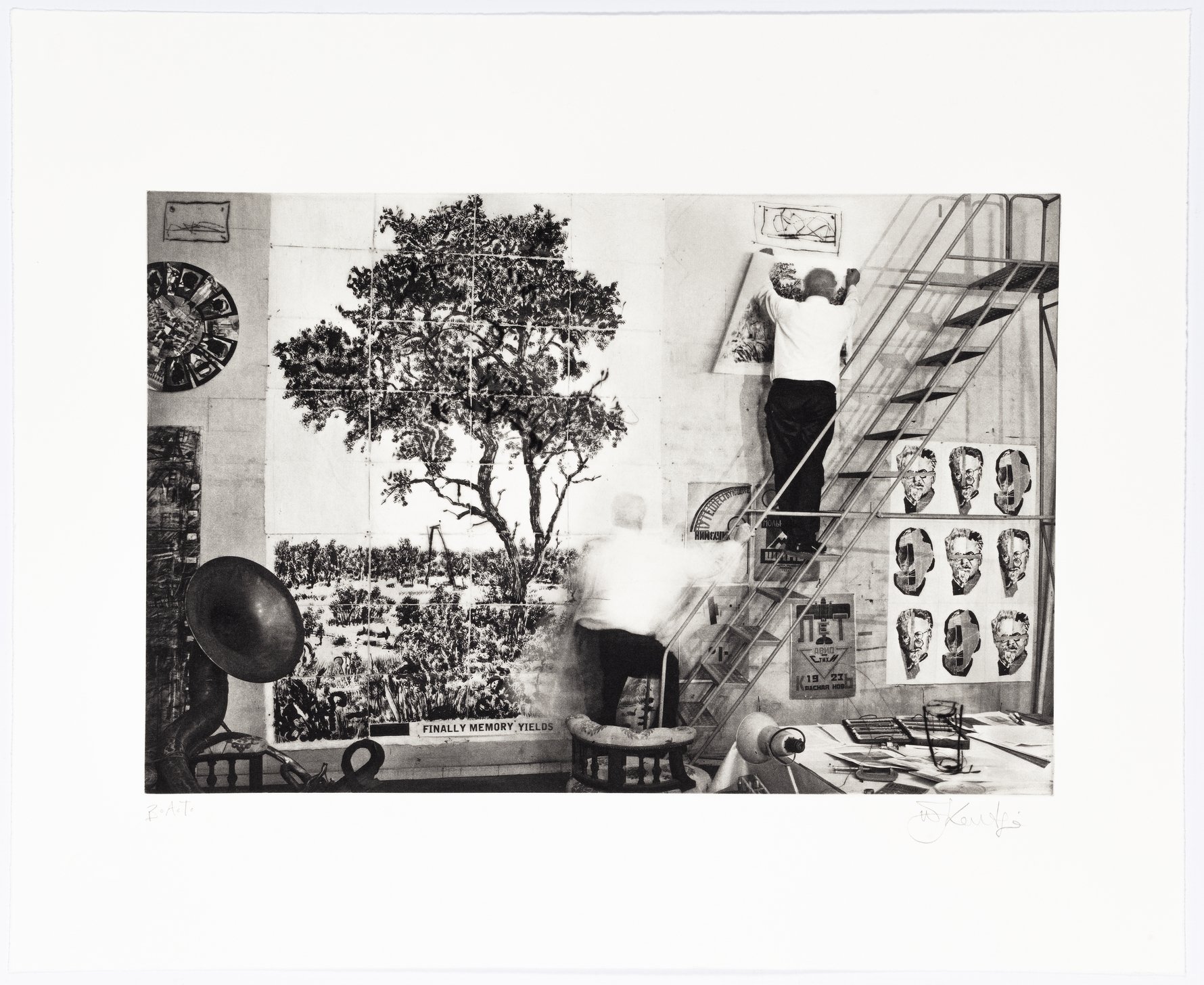
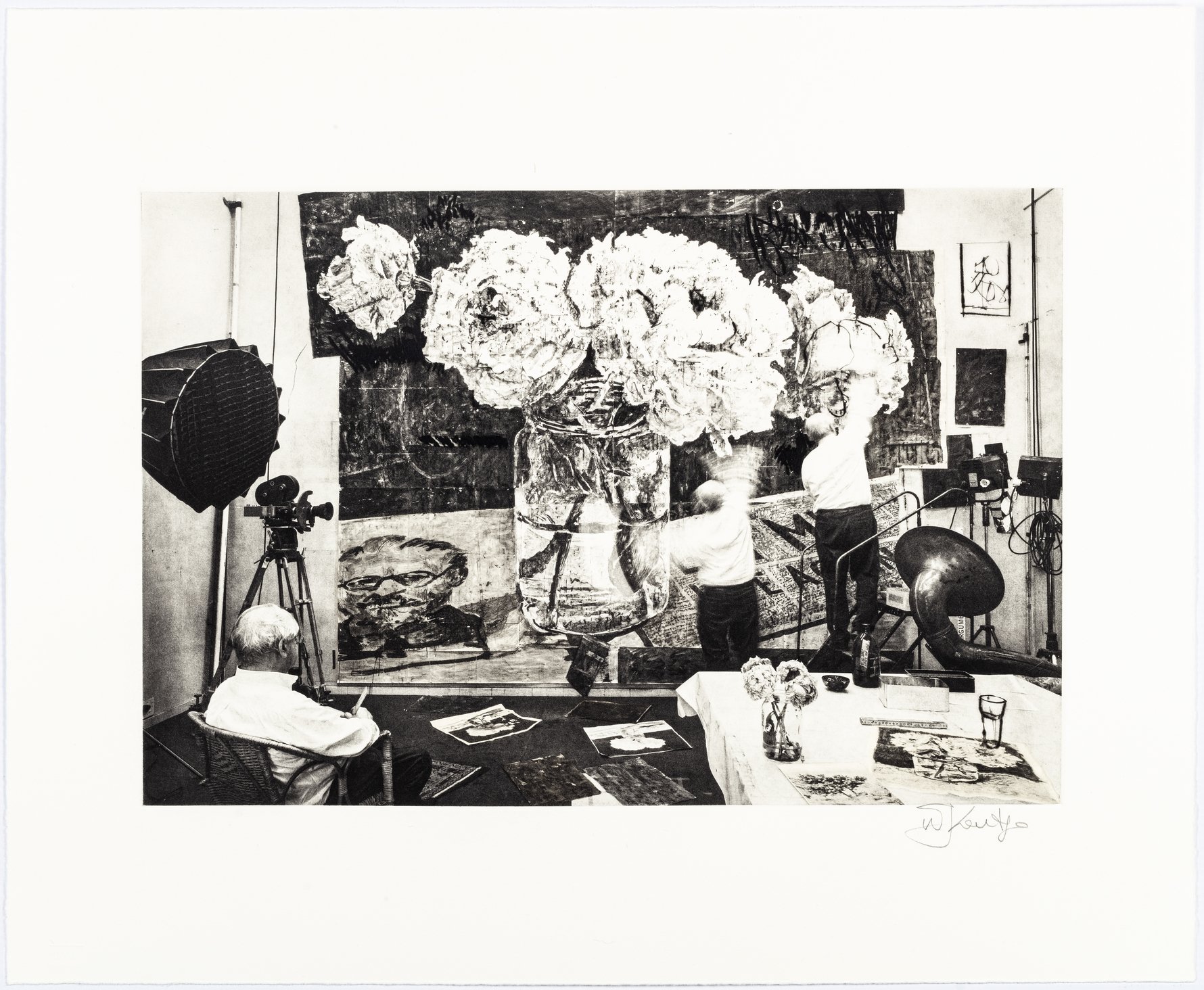
The second series features a group of direct gravures that emerged as a result of Kentridge’s current solo exhibition at The Royal Academy in London, where the artist is presenting an immersive collection of new and never before seen multimedia works, such as large-scale tapestries, charcoal drawings and films. On display in Joburg will be related prints, including the larger-than-life The Old Gods Have Retired based on drawings of trees that feature in his Royal Academy show, as well as works titled Beckmann’s Self-Portrait with Jam Jar and Scissors and The Mirror Will Not Help.
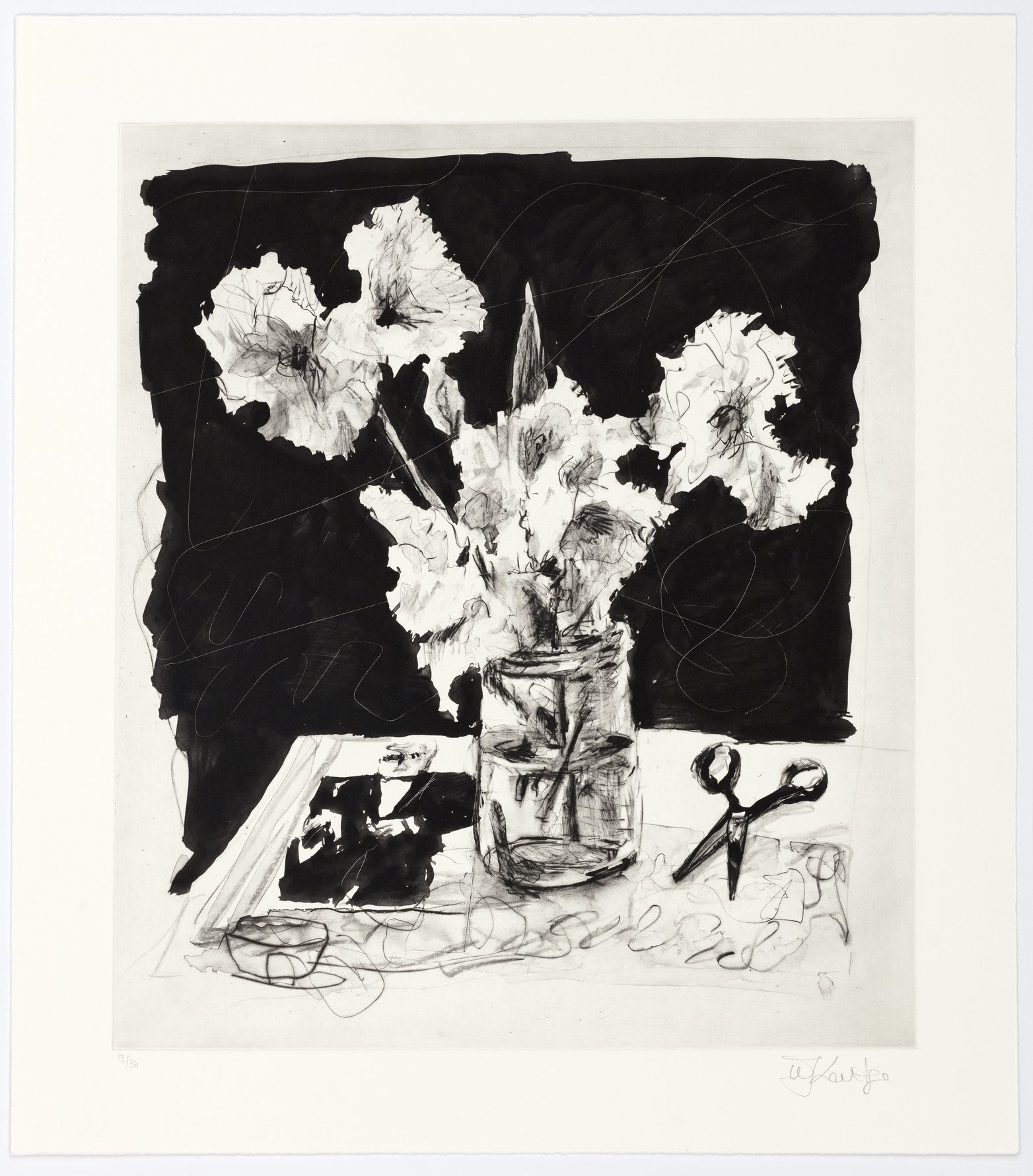
Much of the editioning and work on these gravures was done at David Krut Workshop in Arts on Main. As you walk into the David Krut Workshop it feels as if you are stepping into a strange sci-fi set. The oddly shaped beasts that are the printing presses loom between the shelves and tables cluttered with half-finished creations and art supplies. They steadily gobble up pieces of paper and spit out incredible works of art under the guidance of the masterful printers at David Krut. The smell of ink hangs in the air and fairies of dust swirl in the sun streaming through the windows as the printers move from station to station. One quickly grows accustomed to the environment and as the printers talk you through their process the seemingly chaotic world slowly falls into place. Printers Kim-Lee Loggenberg, Sarah Judge, Sbongiseni Khulu and Roxy Kaczmarek provide insight into the process behind the Studio Life Gravures and their work on them. To read our interview with master printmaker and longtime Kentridge collaborator Jillian Ross click here.
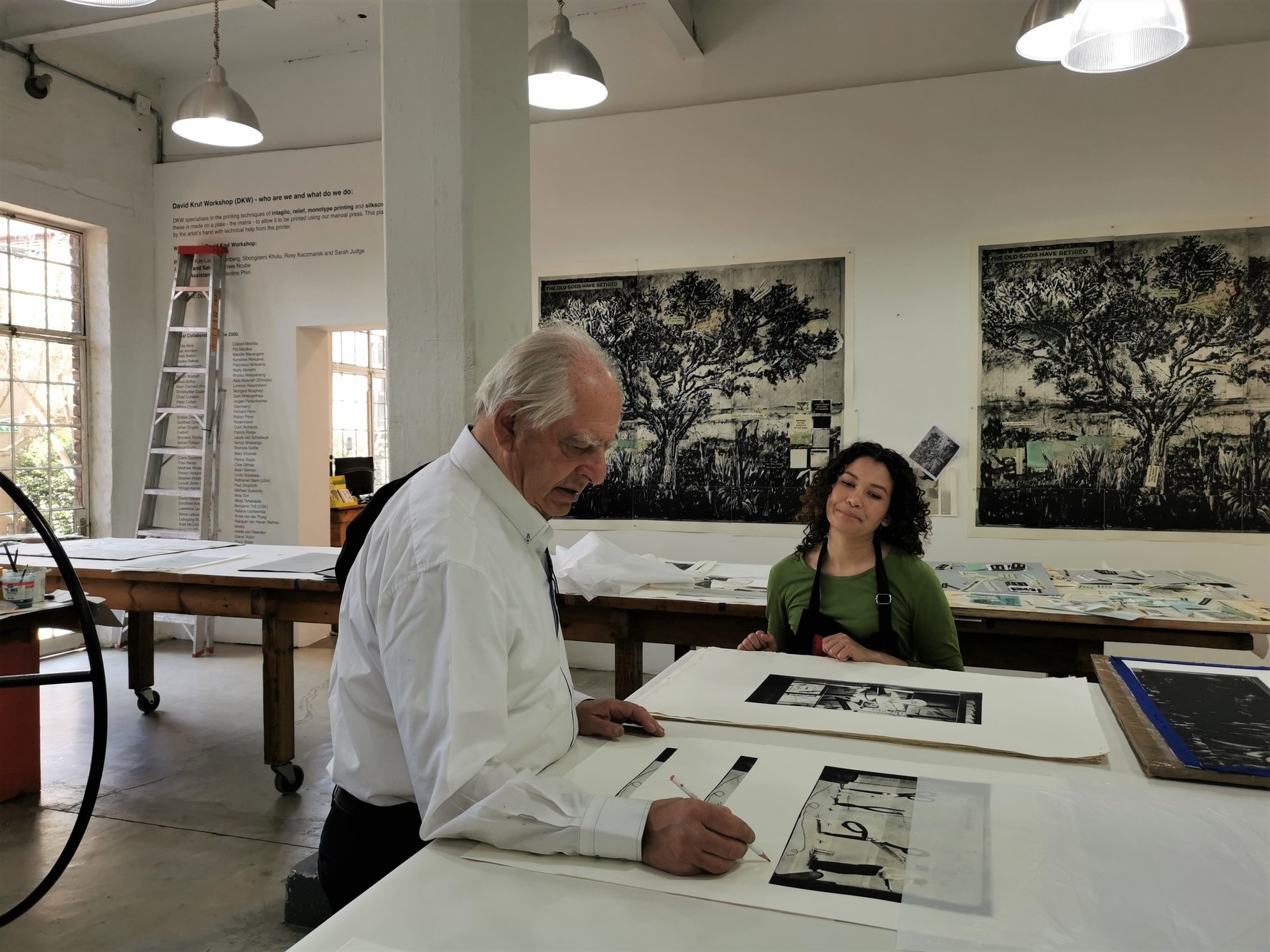
What was your role in the process?
Kim-Lee Loggenberg: At the beginning of the project I was primarily responsible for the etching component of the project. The plates which make up the 12-piece tree are photogravure plates made in Canada with Jill, additional plates were made in Johannesburg to add etched detail to some of the existing photogravure plates and I was responsible for the creation and etching of these editional plates. Later my role was to assist in the printing of the tree as well as proofing and editioning one of the smaller photogravure plates The Mirror Will Not Help.
Sbongiseni Khulu: I printed a few panels/prints that went into making the state and trial proofs, of which I believe all the printers had a hand in printing in one way or another, as there were plenty to go around. I’m also cropping and assembling the printed images with assistance from Jill via Zoom conversations and cropping notes. I’m also the editioning printer for Tree 64 and Tree 17, one of which I printed on gampi chine and the other on two sheets of ledger paper.
Roxy Kaczmarek: For the recent William Kentridge collaborations my role was involved with text pieces and collage/chine pieces. I worked at printing the 7 plates brought from Edmonton that had text etched into them. The plates had a variety of font sizes included on them and we tested different colours of black ink settling on a cool black to offset from the warm black that the main image plates were printed in.
I also worked on tinting the colour of the pieces of chine to match references of maps that Kentridge had included in the original drawing using different saturations of a mix of ochre acrylic paint and blue acrylic ink. The 2 different acrylic mediums don’t mix perfectly and start to separate on the page creating interesting variations in tones which react differently on different types of paper. We tested a variety of papers for the pieces and text plates settling on: Gampi Vellum, Kitakata Natural, Arakaji Natural, Gampi white and natural, Surface Gampi and found dictionary sheets.
In the end, we have 67 additional pieces of paper which are either collaged or chine colléd onto the base sheets.
My role is also in sourcing tools and materials needed for the collaboration and keeping an eye on the overall operational logistics of the workshop. This was an exciting challenge and experience.
Sarah Judge: I played a few different roles in this project/process. I have been incredibly lucky to print the edition of Beckmann’s Self-Portrait with Jam Jar and Scissors, but I have also been involved in the preparation for the project, which largely included the sanding and polishing of the big copper plates. I am also involved with printing a few of the panels of The old gods have retired and collaging the extra pieces onto the printed panels.
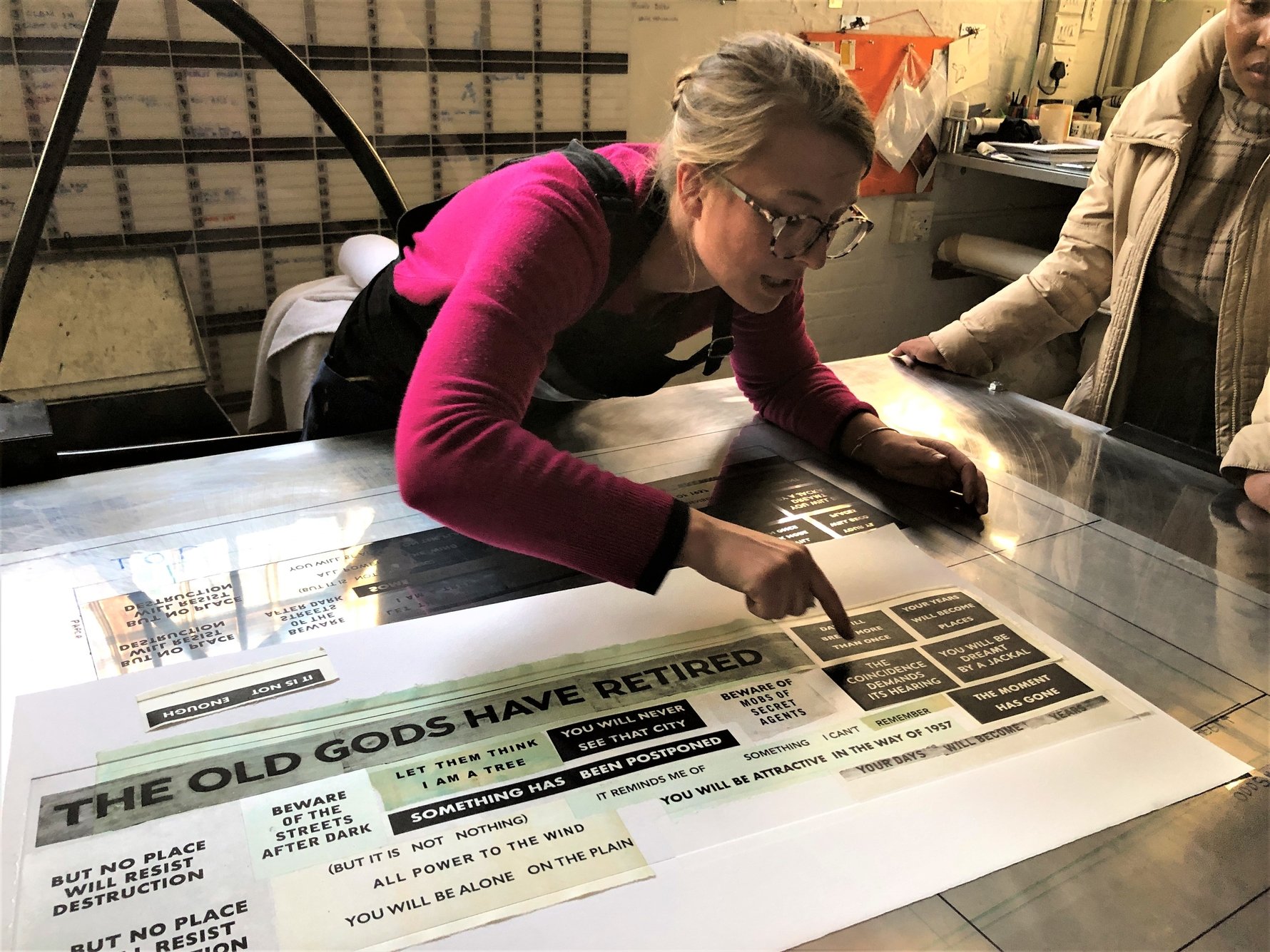
What was the most challenging part of working on these artworks?
Kim-Lee Loggenberg: This project brings together three studios (David Krut Workshop, Jillian Ross Print and Kentridge Studio) and so the challenge came in mostly in developing a project with people and spaces who are operating over long distances, people who travel etc. The project's challenges with distance, however, were also part of what made the project as special and complex as it is
Sbongiseni Khulu: Time, not having enough of it, whilst trying to maintain a certain level of consistency, and of course quality.
What did you learn while working on this project?
Kim-Lee Loggenberg: Often as a printmaker you create work with an artist together with your team and when it’s time to edition you go off on your own and edition in isolation. With this project, the team has been involved from beginning to end. The entire process is a team effort. Many moving parts and many moving people but through it all, we are required to work together and be in constant communication to make sure the vision is realised. I think this project has been a huge lesson in how to work within a team that is diverse, at times working long distances, all the while trying to ensure William is happy with the outcome and a piece that all feel proud of.
Sarah Judge: I learnt to be a lot more patient with others, but I also learnt that we often cap ourselves with how much we can physically and mentally do, but if we look beyond that, our bodies and minds can do so much more than we think.
What were your thoughts the first time you found out you would be working with William Kentridge?
Sbongiseni Khulu: That would have been in 2015, and I believe my initial thoughts were, “Don’t mess this up”. In all honestly, I try to treat every artist and project with the same level of focus and dedication as required.
Roxy Kaczmarek: Excited at the prospect of being able to see behind the scenes how this master approaches his creative process.
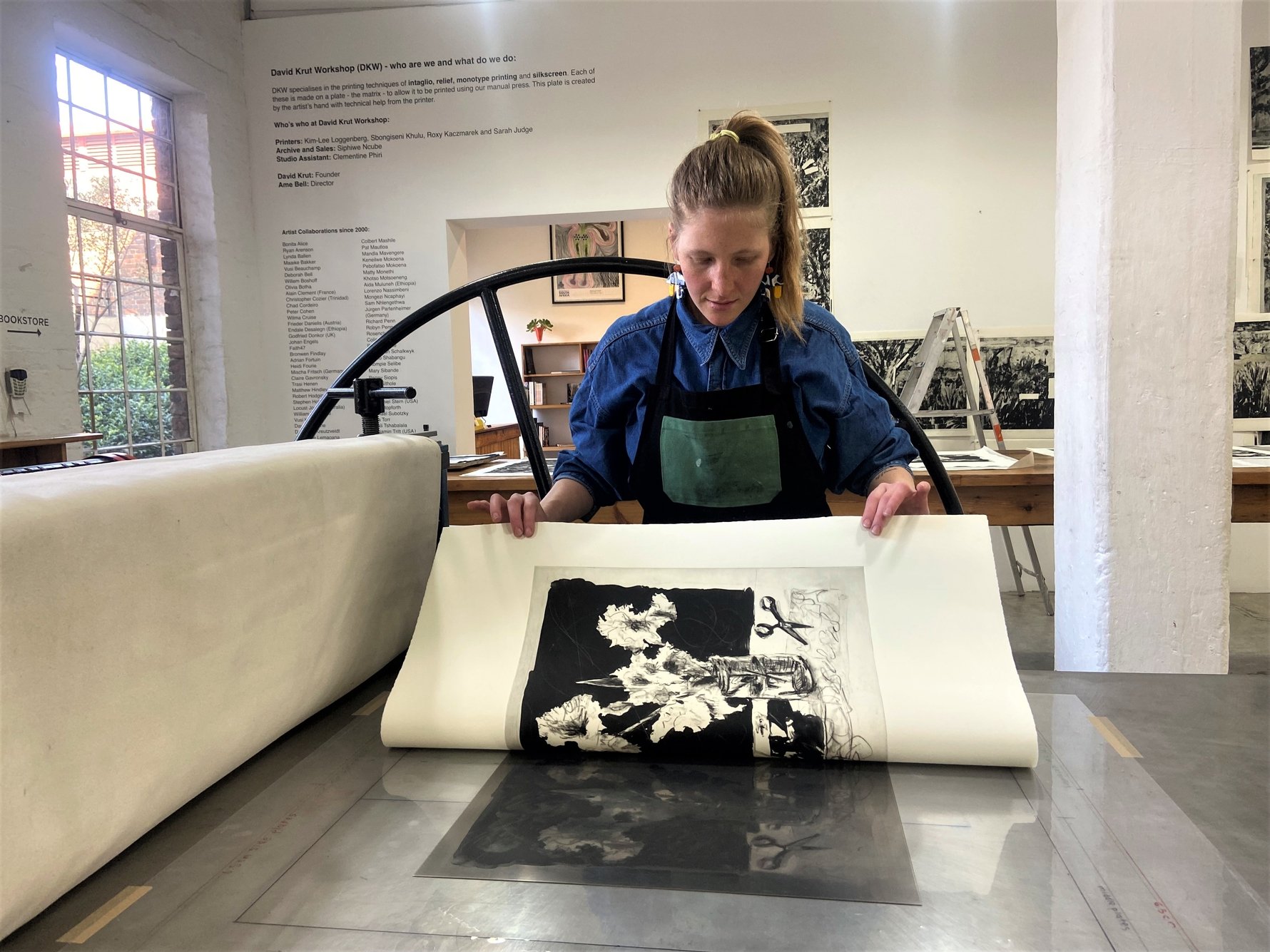
How has the Studio Life series changed your ideas about collaboration?
Roxy Kaczmarek: It was fascinating to observe such a large team operating around William during the collaboration. And to observe how he responded creatively to the ‘audience’ and technical assistance. It takes a certain kind of artist with incredible confidence and a particular mindset to be able to operate in this way.
Sbongiseni Khulu: I wouldn’t say it’s changed it, merely expanded it. I’ve always understood collaboration to be an integral part of printmaking. In print your limits are defined by how much information you have, often many hands make light work and two heads are better than one. However, never could I have imagined embarking on a project of this magnitude cross-continentally.
Sarah Judge: I think a lot of the time we think of collaboration as something that happens between a studio/workshop, like in our case, and the artist, and the artist is present throughout the entire project. However, collaboration can look quite different. This project was a collaboration between David Krut Workshop, William Kentridge and Jillian Ross Print; two print workshops and an artist and his team. William has always been present in the decision-making with what steps are next to take, but, he wasn’t in every day of the projects due to the many projects that he is working on at once, with many different people.
Since being at David Krut what has changed most about your approach to printmaking?
Sbongiseni Khulu: My appreciation of time, and the time it takes to finish a work. Before the finish line was never hard to grasp due to limited knowledge of what print could do. Now the possibilities are endless, yet my time is finite.
Sarah Judge: I have learnt that knowing the “rules” of what's right and what’s wrong, or what works and what doesn’t, has been helpful with breaking so-called traditional rules of printmaking and being a lot more experimental in the process.
What can viewers expect from this latest project?
Sbongiseni Khulu: A collaborative project like none other before.



